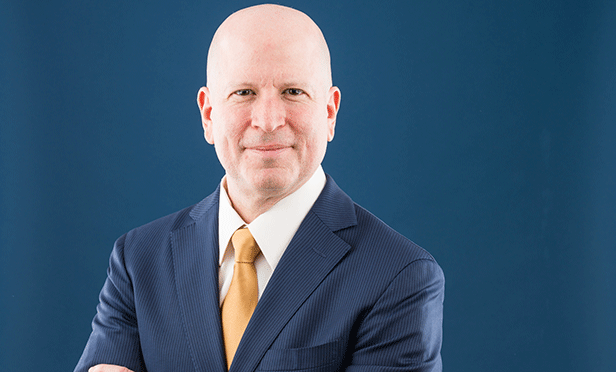IRVINE, CA—There were 6.4 million US properties seriously underwater at the end of 2015, according to RealtyTrac's Year-End 2015 U.S. Home Equity & Underwater Report.
The housing data experts at RealtyTrac define seriously underwater as a combined loan amount secured by the property that is at least 25% higher than the property's estimated market value, and say that represents 11.5% of all properties with a mortgage.
The report is based on publicly recorded mortgage and deed of trust data collected and licensed by RealtyTrac nationwide along with an industry standard automated valuation model (AVM) updated monthly on RealtyTrac's entire database of more than 140 million US properties.
The year-end 2015 seriously underwater properties exact total (6,436,381) is down 481,292 from 6.9 million representing 12.7% of all properties with a mortgage at the end of the third quarter of 2015 and down 616,189 from 7.1 million (7,052,570) representing 12.7% of all properties with a mortgage at the end of 2014. The number of seriously underwater properties at the end of 2015 was half the 12.8 million (12,824,279) representing 28.6% of all properties with a mortgage in Q2 2012, the peak for seriously underwater properties.
"Over the past three and a half years, the number of seriously underwater properties has been cut in half, but we continue to deal with a long tail of seriously underwater properties, and it will likely be another five years at least before most of those remaining underwater properties move into positive equity territory," said Daren Blomquist, vice president at RealtyTrac. "At the other end of the spectrum, the growing number of equity rich properties reflects a moribund move-up market and restrained leveraging of home equity by U.S. homeowners."
As of the end of 2015 there were 12.6 million (12,621,274) U.S. properties that were equity rich (at least 50% equity), representing 22.5% of all properties with a mortgage. The number of equity rich properties at the end of 2015 was up 2.1 million (2,145,015) from the 10.5 million (10,476,259) representing 19.2% of all properties with a mortgage at the end of Q3 2015 and up 1.4 million (1,371,628) from the 11.2 million (11,249,646) representing 20.3% of all properties with a mortgage at the end of 2014.
"The equity in South Florida homeownership continues to grow with our rising prices," said Mike Pappas, CEO and president of Keyes Company, covering the South Florida market. "We have tipped the scale — now with more homes in strong equity positions—than underwater homeowners. Distressed homeowners who are underwater still have options—working through a short sale — usually receiving some cash for moving or utilizing the advantageous HARP refinancing vehicle."
Markets with the highest and lowest share of seriously underwater properties
Among metropolitan statistical areas with a population of at least 500,000, those with the highest share of seriously underwater properties as of the end of 2015 were Las Vegas, Nevada (27.7%), Lakeland, FL (24.4%), Cleveland (24.2%), Akron, OH (22.5%), and Orlando (22.2%).
Markets with the lowest share of properties seriously underwater as of the end of 2015 were San Jose, CA (1.8%), San Francisco (3.8%), Austin, TX (3.9%), Portland, OR (4.2%), and Boston, (4.2%).
"I'm very pleased to see the continued drop in Seattle homeowners who are seriously underwater, which is further indication that we've climbed out of the hole we found ourselves in following the crash of the market in 2008," said Matthew Gardner, chief economist at Windermere Real Estate, covering the Seattle market. As of the end of 2015, 6.3% of homes with a mortgage in the Seattle metro area were seriously underwater, down from 8.9% a year ago, according to the report. "Seattle housing is benefitting greatly from positive job growth, favorable borrowing costs, and strong appreciation; therefore, I expect to see more and more homeowners return to positive equity in the coming year. My hope is that this leads to additional inventory which we desperately need in the Seattle housing market."
Markets with the highest and lowest share of equity rich properties
Among metropolitan statistical areas with a population of at least 500,000, those with the highest share of equity rich properties as of the end of 2015 were San Jose, CA (53.7%), San Francisco (47.6%), Honolulu (36.7%), Los Angeles (35.8%), and Pittsburgh, PA (35.0%).
Markets with the lowest share of equity rich properties as of the end of 2015 were Memphis, TN (11.4%), Dayton, OH (12.1%), Indianapolis (12.4%), Las Vegas (13.1%), and Cleveland, OH (13.3%).
Half of all properties in foreclosure now have some equity, a new high
As of the end of 2015, 49.7% of all homes in foreclosure had some equity, the highest percentage since RealtyTrac began tracking in Q3 2013. The share of in-foreclosure properties with equity at the end of 2015 was up from 43.3 percent as of the end of Q3 2015 and up from 34.6% as of the end of 2014.
"The increase in equity in 2015 was the enabling factor in assisting some less fortunate homeowners — such as those troubled by divorce, health, or job loss events — the ability to avoid foreclosure by taking advantage of market conditions in the sale or refinance of their properties," said Michael Mahon, president at HER Realtors, covering the Cincinnati, Dayton and Columbus markets in Ohio. This favorable equity environment has helped to reduce the overall foreclosure activity across Ohio, and is further predicted to further reduce the number of underwater foreclosures in 2016."
Among metropolitan statistical areas with a population of at least 500,000, those with the highest percentage of foreclosure homes with equity were Denver (89.6%), Austin, Texas (88.8%), San Jose, California (87.5%), Pittsburgh (85.3%), and Nashville (83.6%).
As of the end of 2015, 28.4% of properties in foreclosure were seriously underwater, down from 33.4% at the end of the third quarter of 2015 and down from 34.6% at the end of 2014 to the lowest level since RealtyTrac began tracking this metric in the first quarter of 2012.
© 2025 ALM Global, LLC, All Rights Reserved. Request academic re-use from www.copyright.com. All other uses, submit a request to [email protected]. For more information visit Asset & Logo Licensing.








